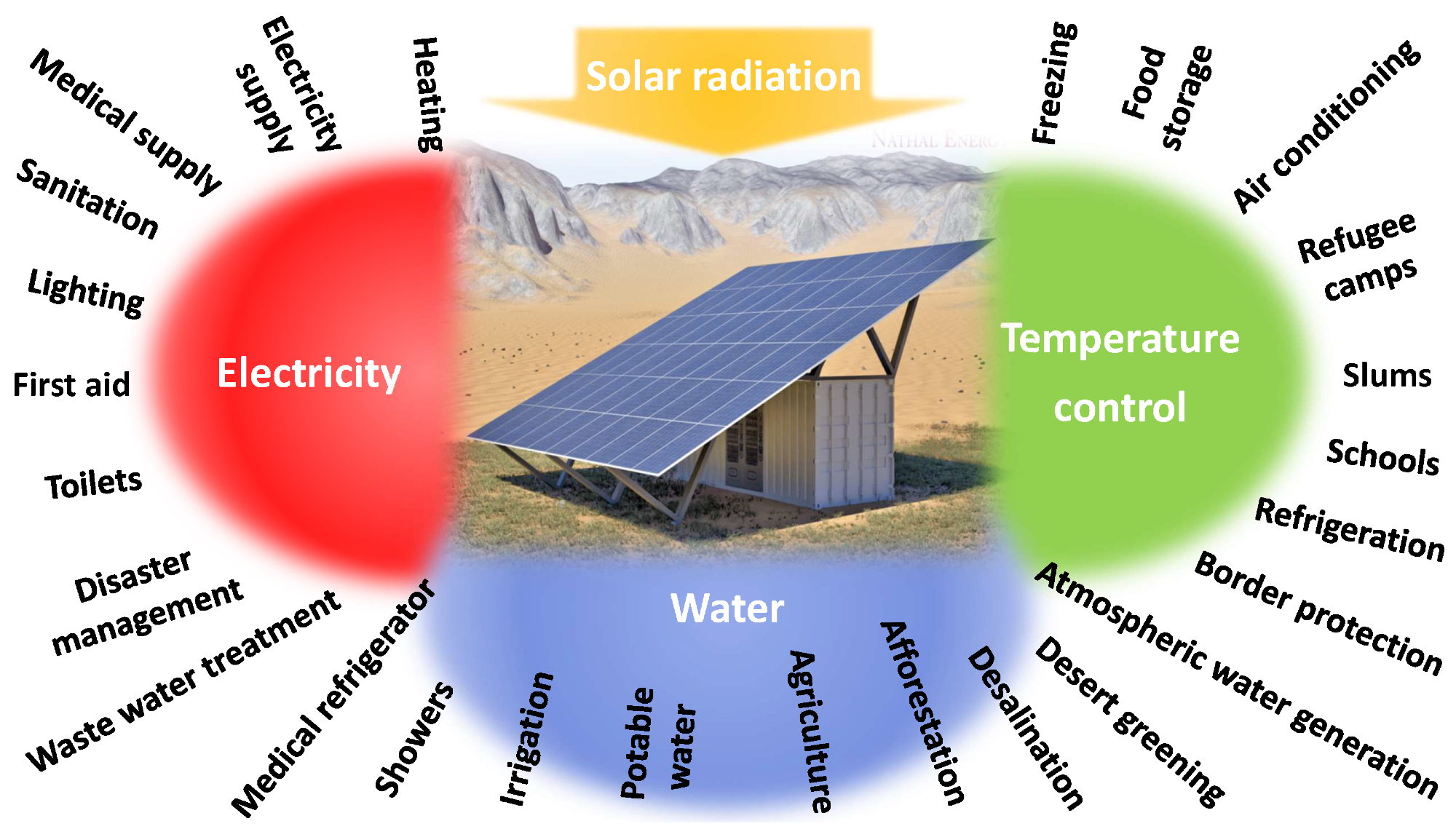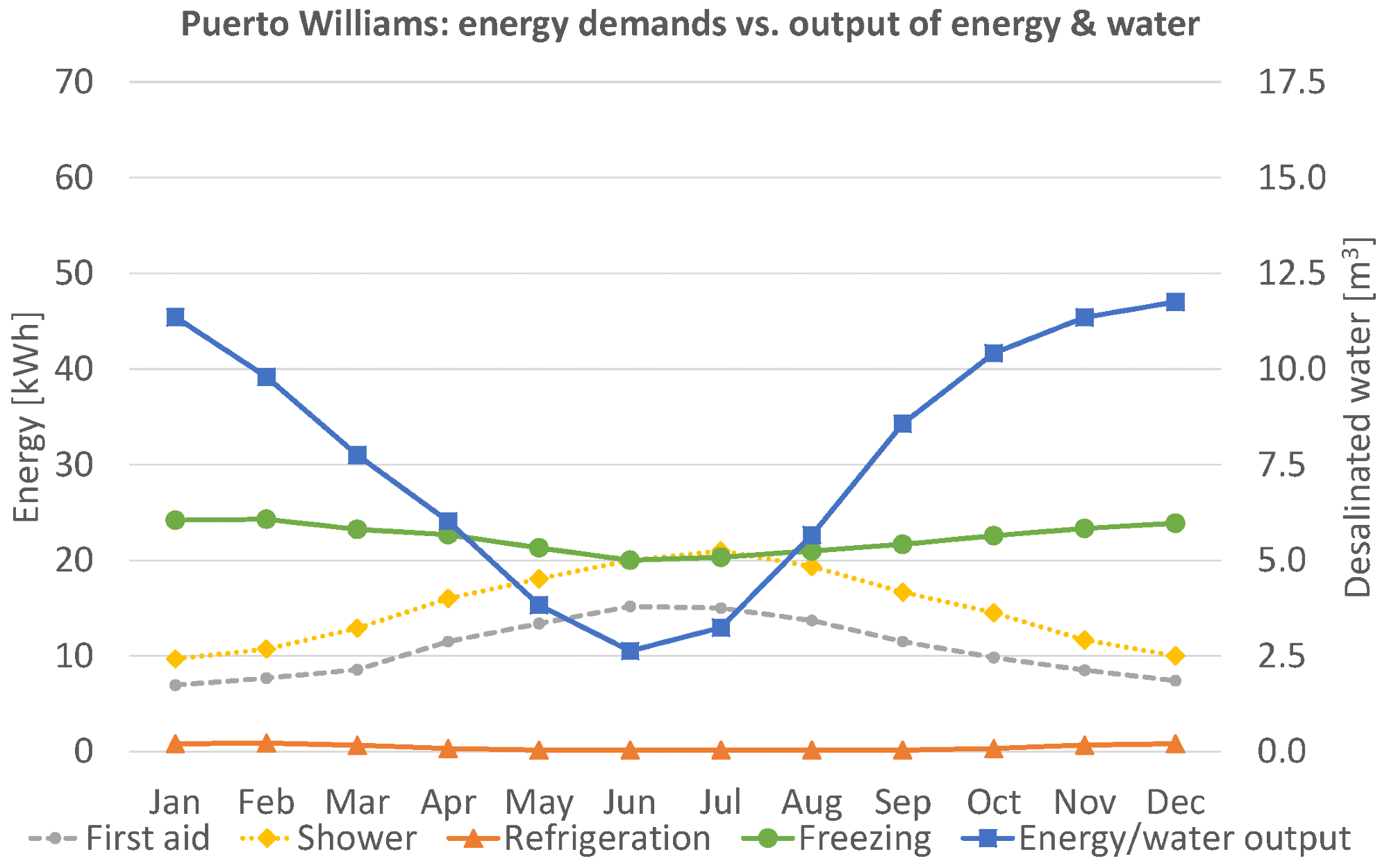Reliable multi-purpose service modules are required to provide effective solutions in times of disaster and social emergencies. Solar power can be used in these modules to provide a consistent power source, and a new study in the journal Sustainability has analyzed the performance of such a module. Scientists from Germany, Austria, and Kuwait have contributed to the paper.

Study: Performance Analysis of a Solar-Powered Multi-Purpose Supply Container. Image Credit: Guenter Albers/Shutterstock.com
Managing Emergencies and Social Problems
Climate change is one of the most pressing existential threats modern society faces. By 2040, according to Greenpeace, there could be as many as two hundred million climate refugees, which will place huge economic and social burdens on nations. Additionally, rising global temperatures are predicted to cause more intense environmental disasters in the future, such as flooding, wildfires, heatwaves, droughts, and hurricanes.
All these issues come with a huge cost in terms of human lives. Disasters cause the displacement of whole populations, making vast numbers of people homeless. Add to this the growing world population and effects such as water shortages due to increased consumption, which is evolving into a food crisis in many vulnerable developing nations, and there is an urgent need to mitigate the impacts of climate change and environmental pollution.
The delivery of humanitarian aid is crucial to managing disasters and social issues such as vast numbers of climate refugees. Essential equipment such as tents, sleeping bags, food, water, first aid kits, power generators, and desalination equipment need to be sent to areas in need quickly. The reliable and quick delivery of humanitarian aid is essential for saving lives and minimizing personal suffering in the aftermath of a disaster.

Interface and applications of the supply container. The only input to the containers is solar radiation, which is transformed into electricity by the solar panel. The electricity can be stored in a battery and can be used to provide air conditioning, heating, drinking water, irrigation, sanitary facilities, vacuum for medical purposes, etc. In this article, the performance of the supply container is analyzed when used as a first-aid module, shower module, freezing module and refrigeration module as well as a desalinated water generator. Image Credit: Peter, S et al., Sustainability
Service modules and mobile supply containers are a key strategy for delivering humanitarian aid to where it is needed. Nathal Energy®, an Austrian-German thinktank, has developed a mobile supply container for delivering drinking water and electricity to disaster areas quickly. One of the key challenges with designing mobile supply containers and service modules has been a reliable power source that is capable of operating in any environment.
One such power source that provides modules with reliable electricity in any environment is solar power due to the limitless clean energy that can be harvested from the sun. Solar panels are cheap to install, and the technology is already proven. Indeed, the idea of using solar panels to generate electricity and water in containers is not a new one, and several projects in recent years have explored this technology. Components in solar-powered supply modules can vary according to need.
Potential uses of these supply modules are vast, including toilets, lighting, heating, and air conditioning, for use in refugee camps, border protection, disaster management, schools, irrigation, wastewater treatment, providing potable water, agriculture, and as medical refrigeration units in pandemics.
The Paper
The paper has evaluated the performance of a solar-powered supply container for use as a refrigeration unit, freezing unit, first-aid unit, shower unit, or a desalinated water generator. Shipping containers have enormous potential for this purpose due to their vast numbers (millions have fallen into disuse over the past few decades), and the fact that they are inexpensive and are typically constructed from COR-TEN steel, which is highly durable.
The study’s literature review is heavily based on the military sector as this sector possesses capabilities for moving large numbers of goods to disaster zones in short periods of time, which is unparalleled in other industries.
The paper includes calculations of energy demand for four different module types (shower, first aid, freezing, refrigeration) from five separate locations with diverse climates: Yakutsk, Russia, Puerto Williams, Chile, Colonia, Uruguay, Djibouti, and Port-au-Prince, Haiti. Year-round and seasonal operations were compared.
The supply container’s basic configuration was discussed in the research, alongside average daily energy consumption calculations for each month. Average daily energy production in each location was compared to each module type’s energy demands.
Results indicated that supply containers can operate year-round as accommodation, refrigeration, first aid, or freezing modules in locations up to mid-latitudes. Surplus energy produced by the solar panel can be utilized for other purposes, including safe water generation. Up to 15 m3 of water can be produced per day by desalination methods, which can be used for agriculture or afforestation.

Puerto Williams, Chile. Left axis: Average daily demands of the first-aid, shower, refrigerator and freezing modules and average daily energy output of the supply container. Right axis: Average daily output of drinking water by desalination of sea water assuming a specific energy of 4 kWh m−3. Image Credit: Peter, S et al., Sustainability
The authors have stated that converting shipping containers into supply containers is beneficial, as even when there is insufficient infrastructure they combine the advantages of rapid transport and the provision of copious quantities of basic supplies. They are incredibly useful for use in disaster areas and potential climate emergencies such as conflicts for resources and climate refugee camps.
The authors have identified several useful research directions. Analyzing more locations will provide more accurate data and detailed results. Air conditioning could be used to provide surplus water generation in combination with other technologies.
Another promising field is using technologies such as AI to incorporate intelligence into systems and improve autonomous control. Energy consumption could be optimized, and other sources of water such as atmospheric water or grey wastewater could be utilized. The authors have stated that cost and payback calculations should be analyzed in further studies. Finally, the authors plan to gain practical knowledge and prove the concept using pilot projects.
Further Reading
Peter, S et al. (2022) Performance Analysis of a Solar-Powered Multi-Purpose Supply Container Sustainability 14(9) 5525 [online] mdpi.com. Available at: https://www.mdpi.com/2071-1050/14/9/5525.
Disclaimer: The views expressed here are those of the author expressed in their private capacity and do not necessarily represent the views of AZoM.com Limited T/A AZoNetwork the owner and operator of this website. This disclaimer forms part of the Terms and conditions of use of this website.